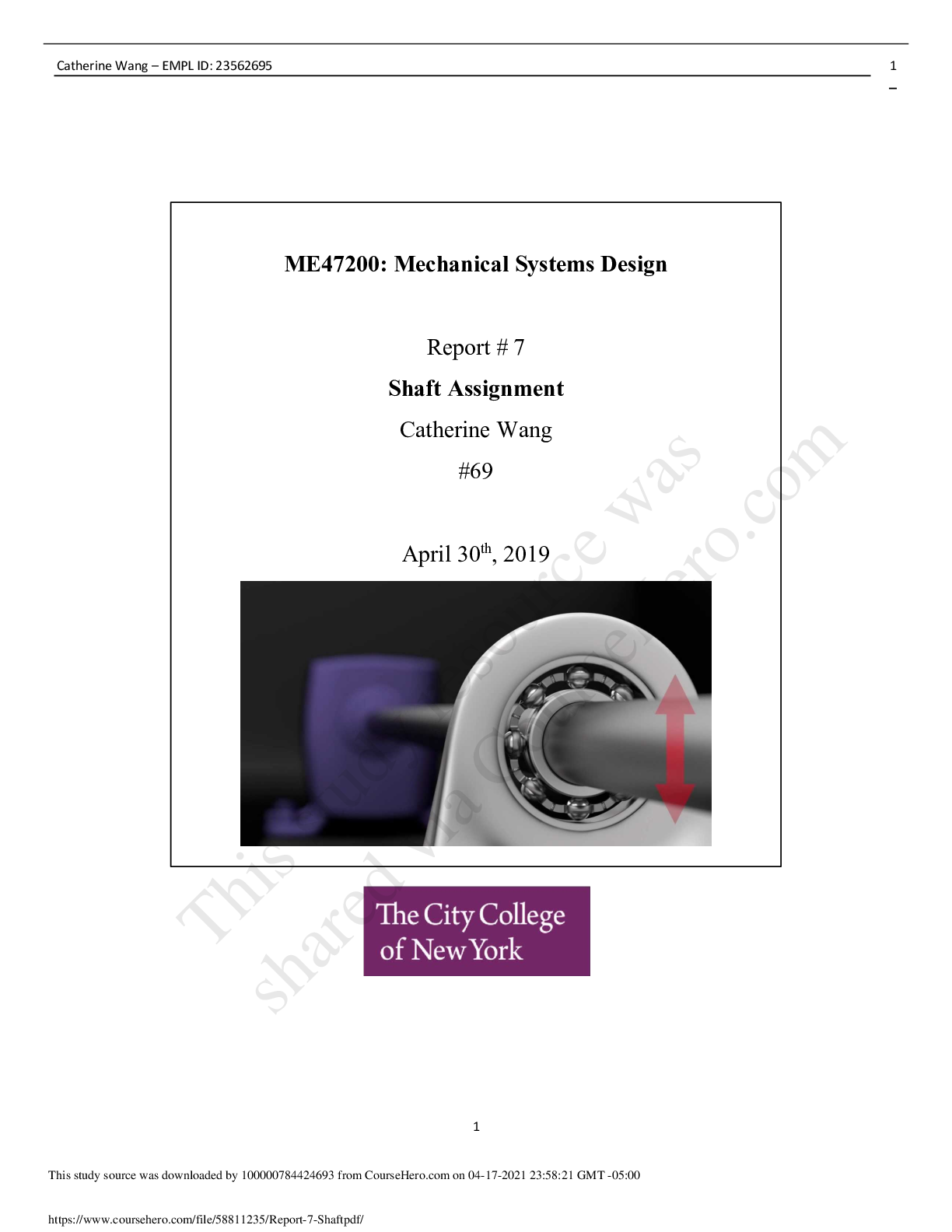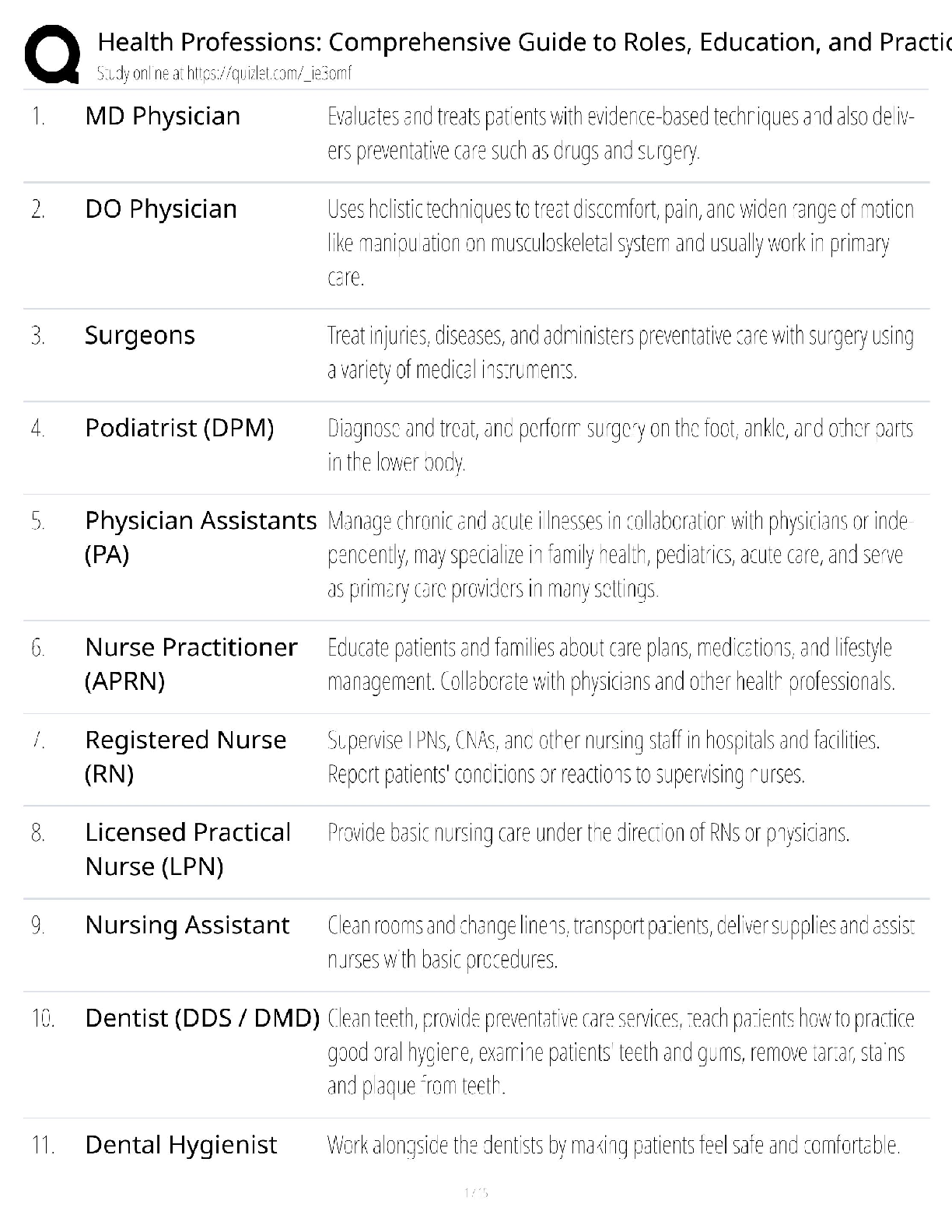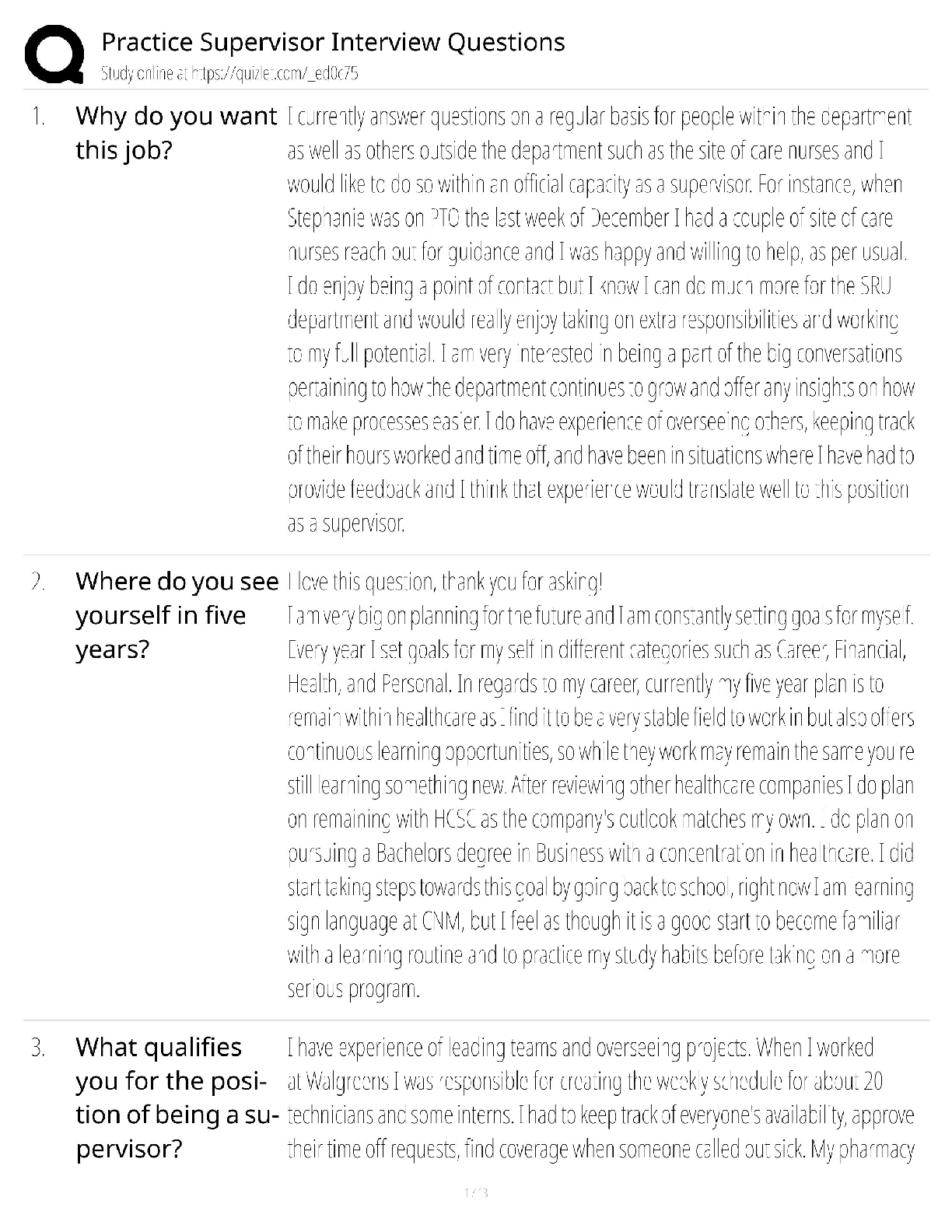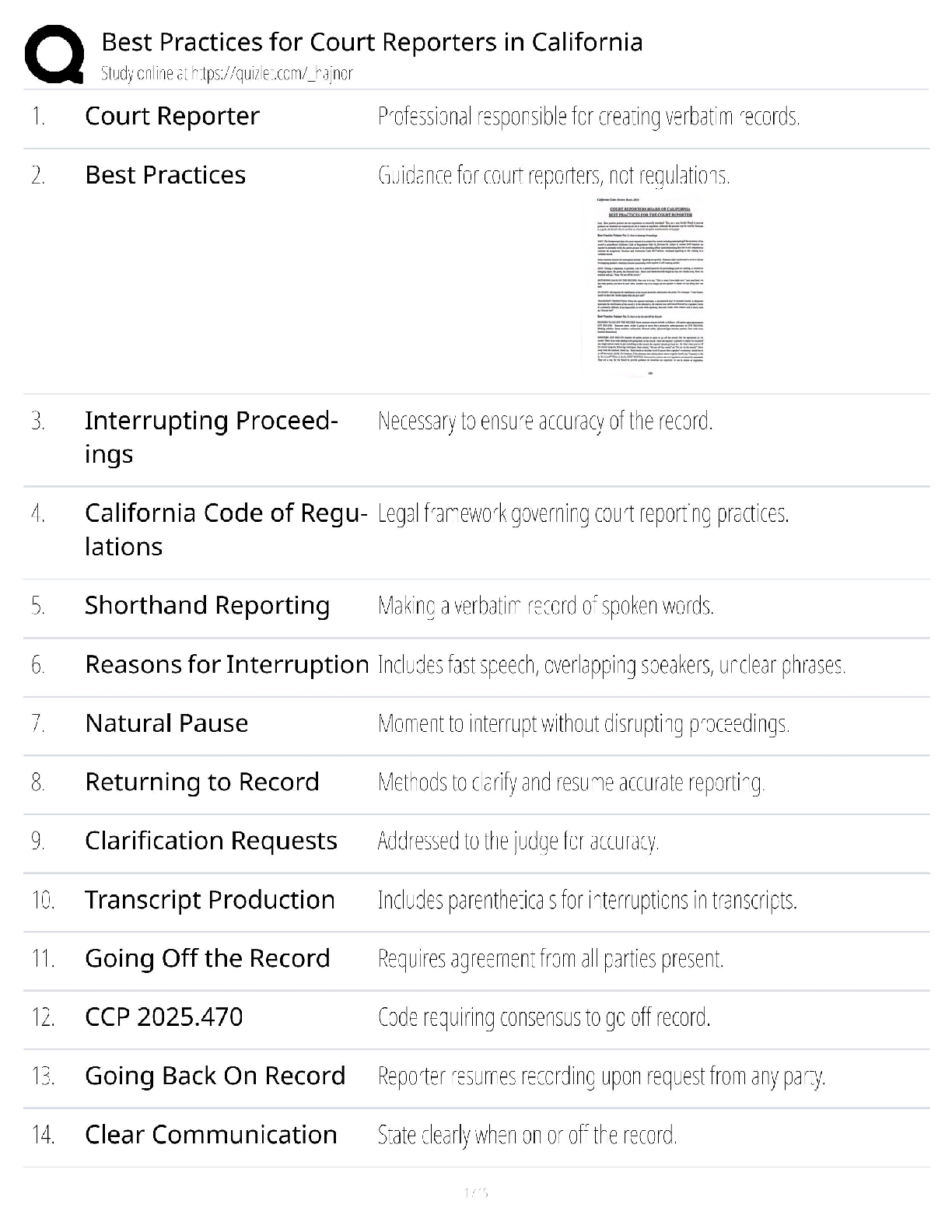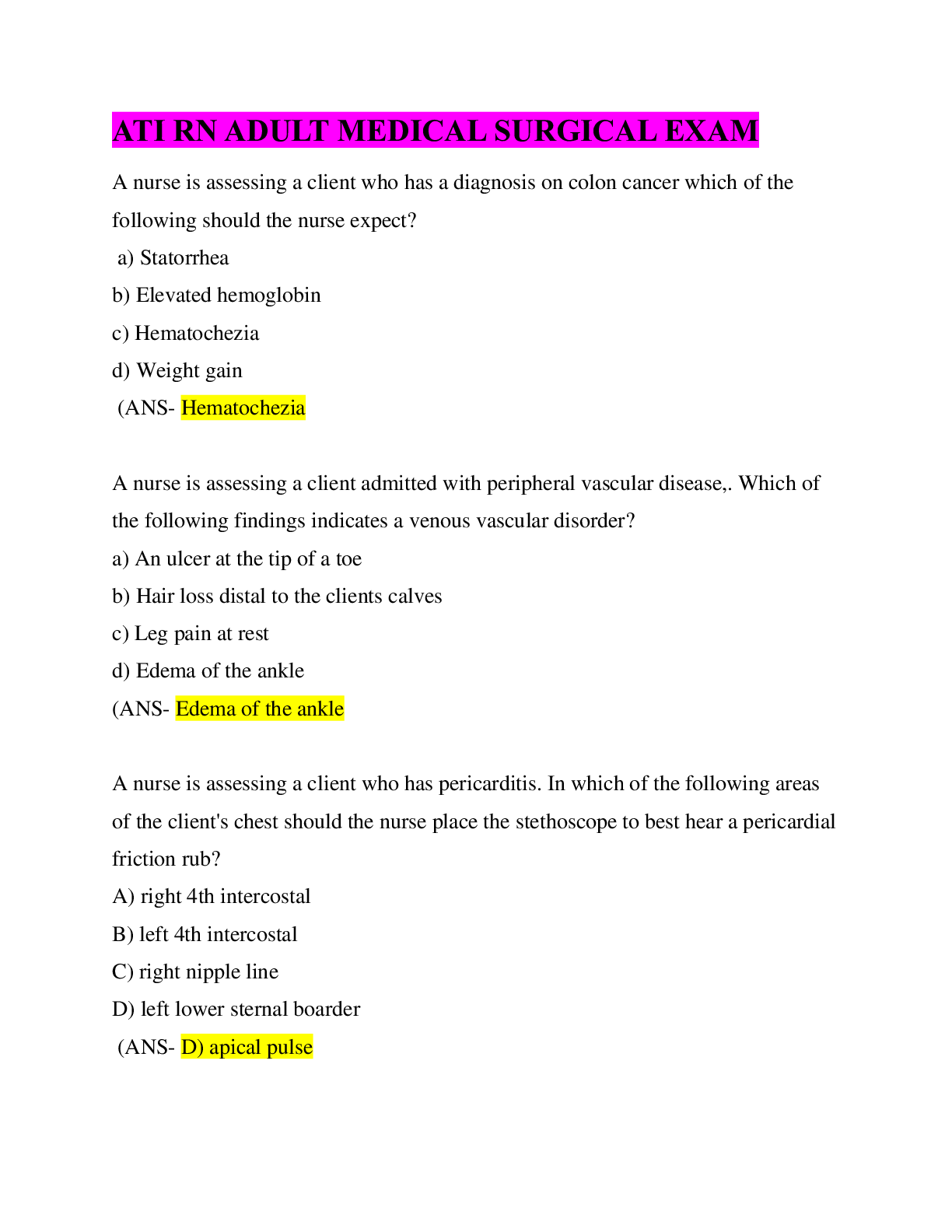
ATI RN ADULT MEDICAL SURGICAL EXAM/ Questions & Answers/ Latest
$ 11

Week 5 APEA Predictor Assignment Part 2 NR 603: Advanced Clinical Diagnosis and Practice Across Life Span
$ 7.5
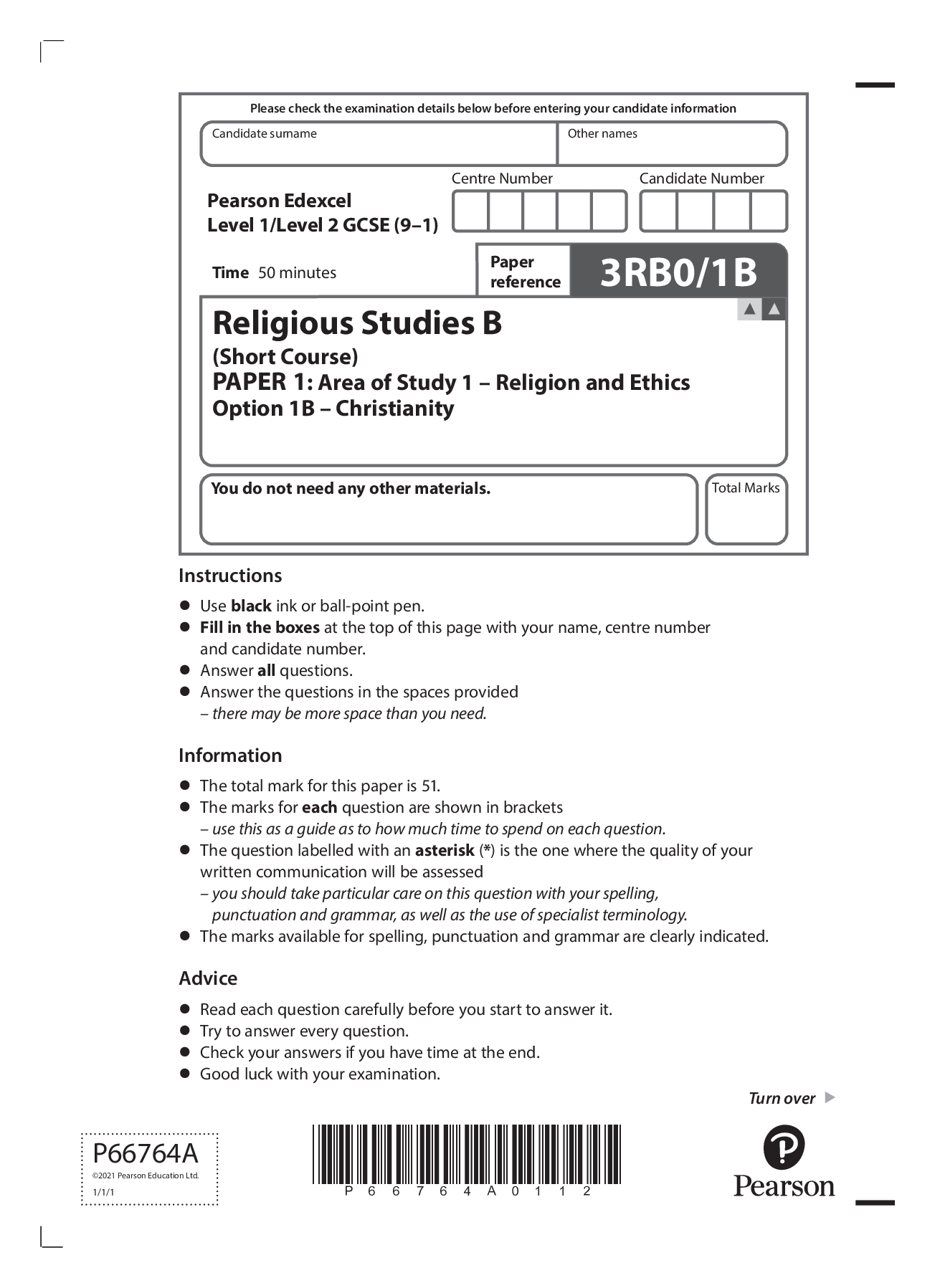
Pearson Edexcel Level 1/Level 2 GCSE (9–1) 3RB0/1B Religious Studies B (Short Course) PAPER 1: Area of Study 1 Religion and Ethics Option 1B Christianity. Question Paper. Nov 2021.
$ 6.5
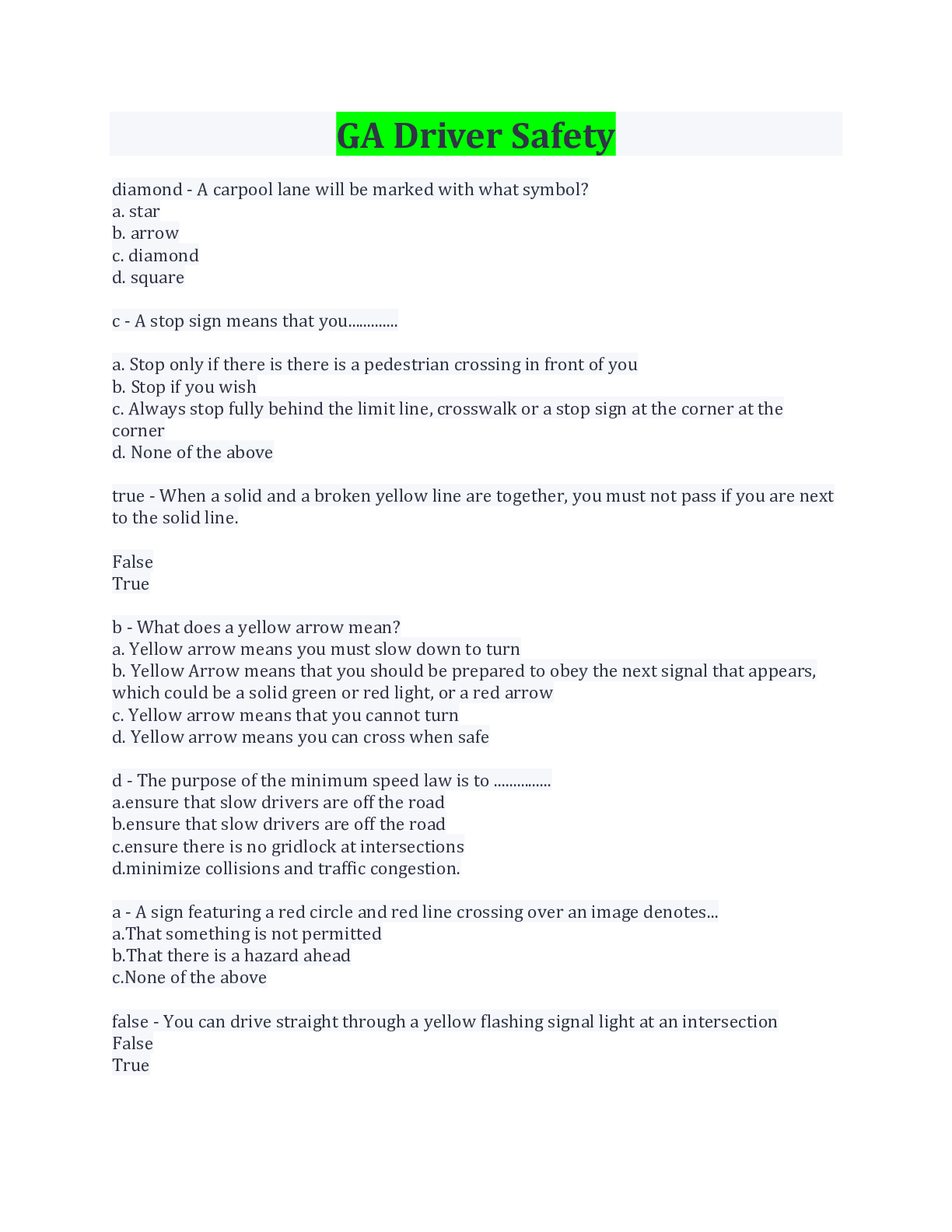
GA Driver Safety Questions And Answers
$ 10.5
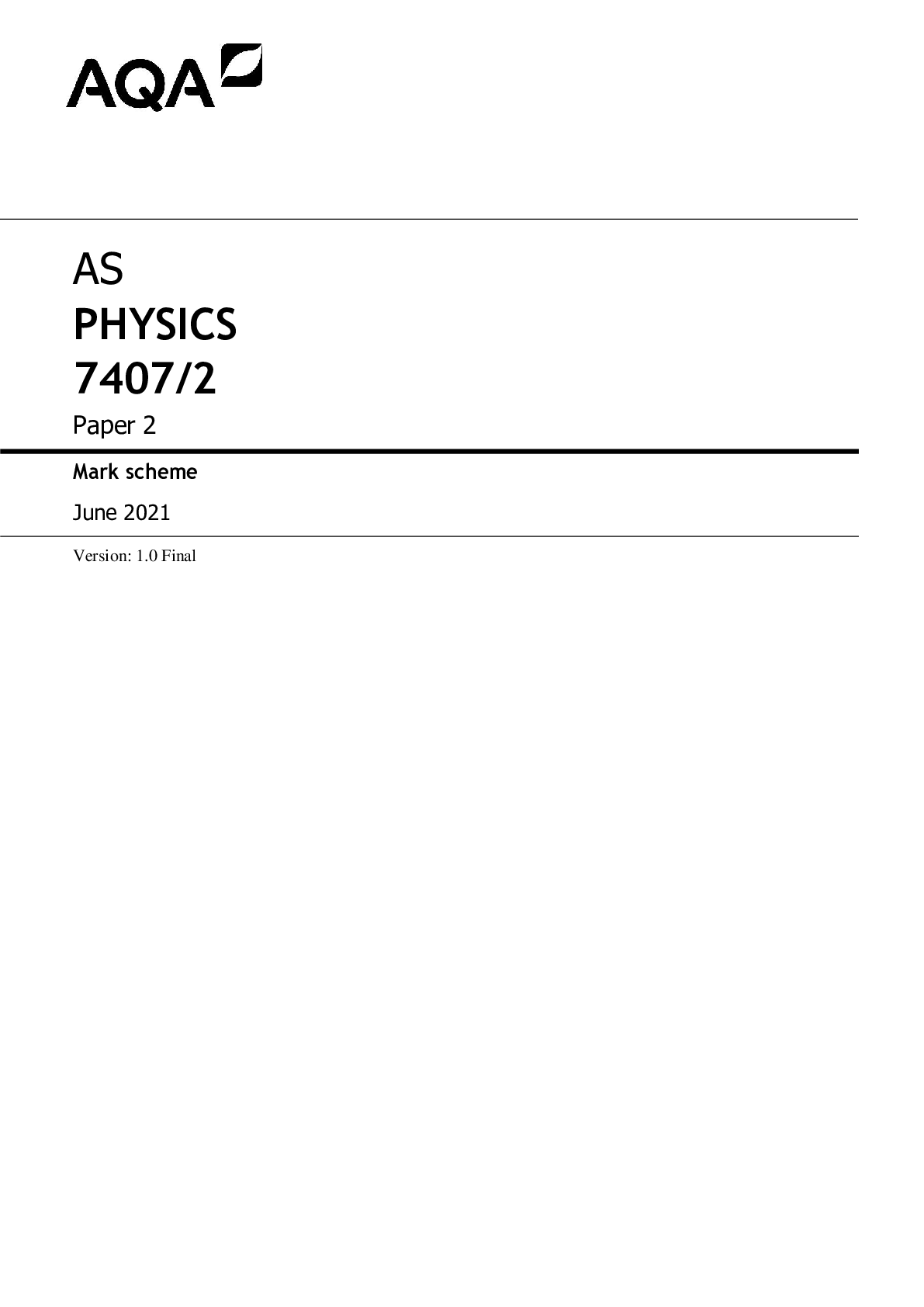
AQA AS PHYSICS 7407/2 Paper 2 Mark scheme June 2021
$ 10.5
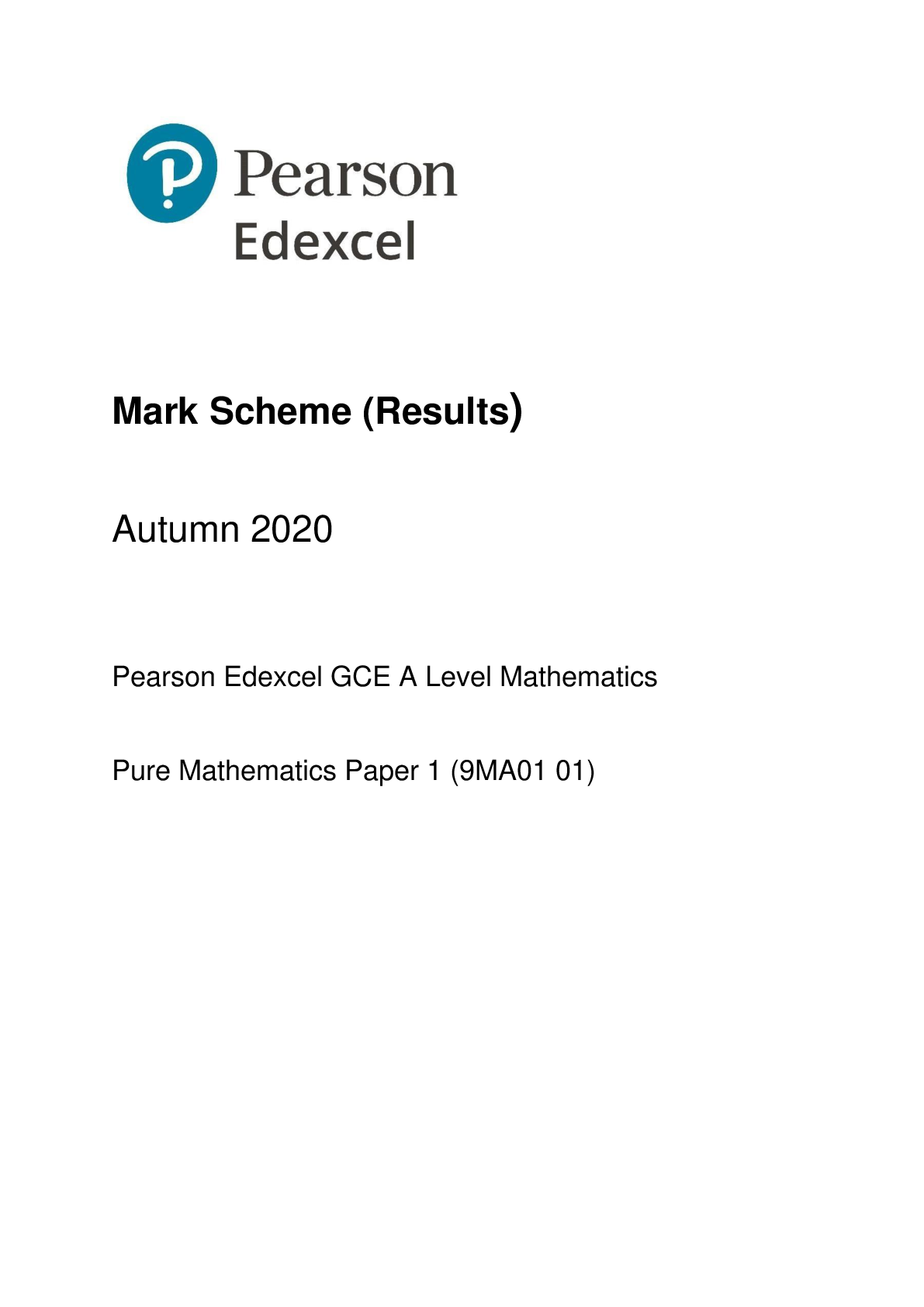
A level mathematics Edexcel 2020 pure paper 1 mark scheme only
$ 10

FLORIDA FIRE INSTRUCTOR 1 EXAM ACTUAL EXAM 300 QUESTIONS AND CORRECT DETAILED ANSWERS (100% CORRECT ANSWERS) (VERIFIED ANSWERS) |ALREADY GRADED A
$ 25
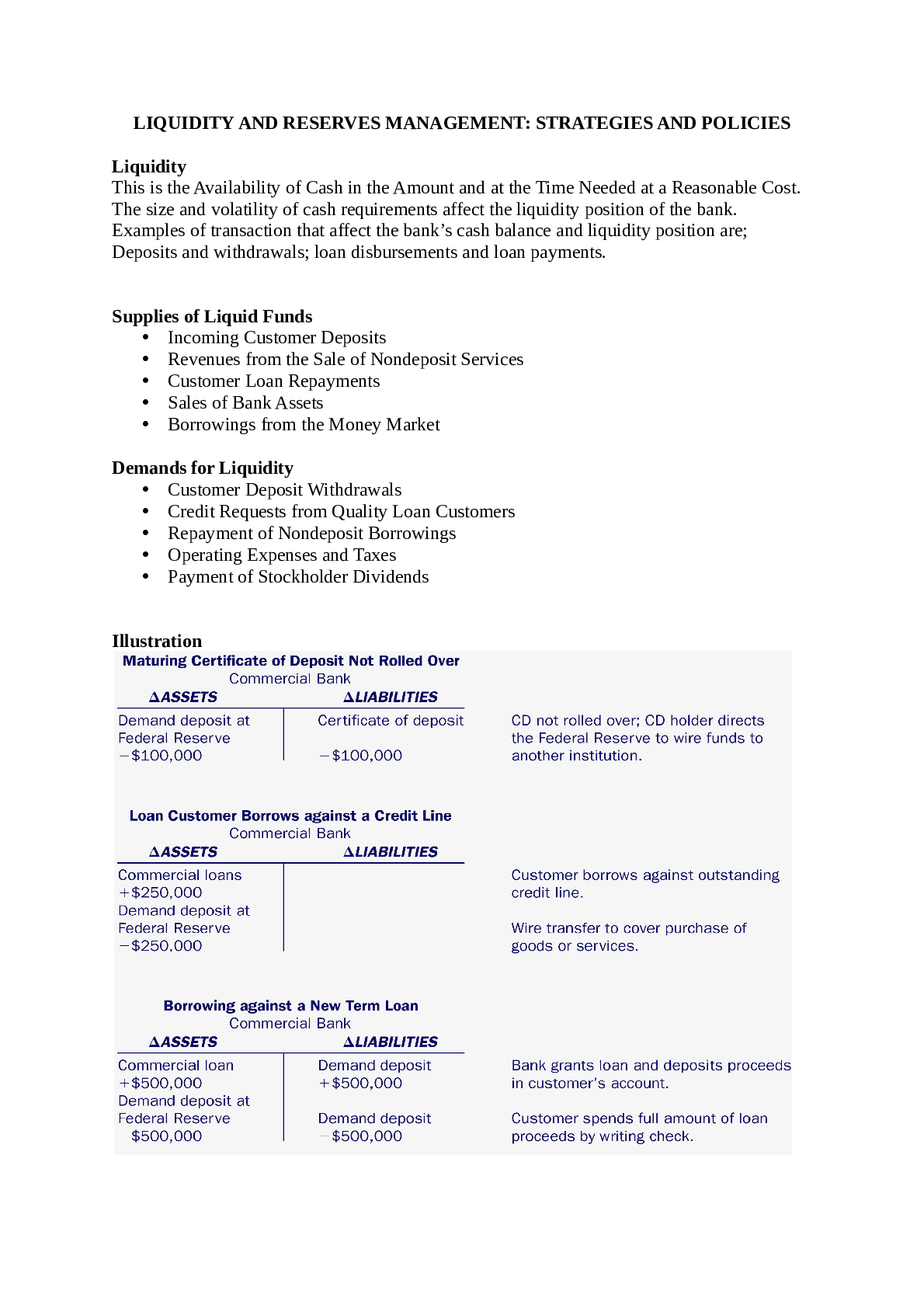
LIQUIDITY AND RESERVES MANAGEMENT: STRATEGIES AND POLICIES
$ 9.5
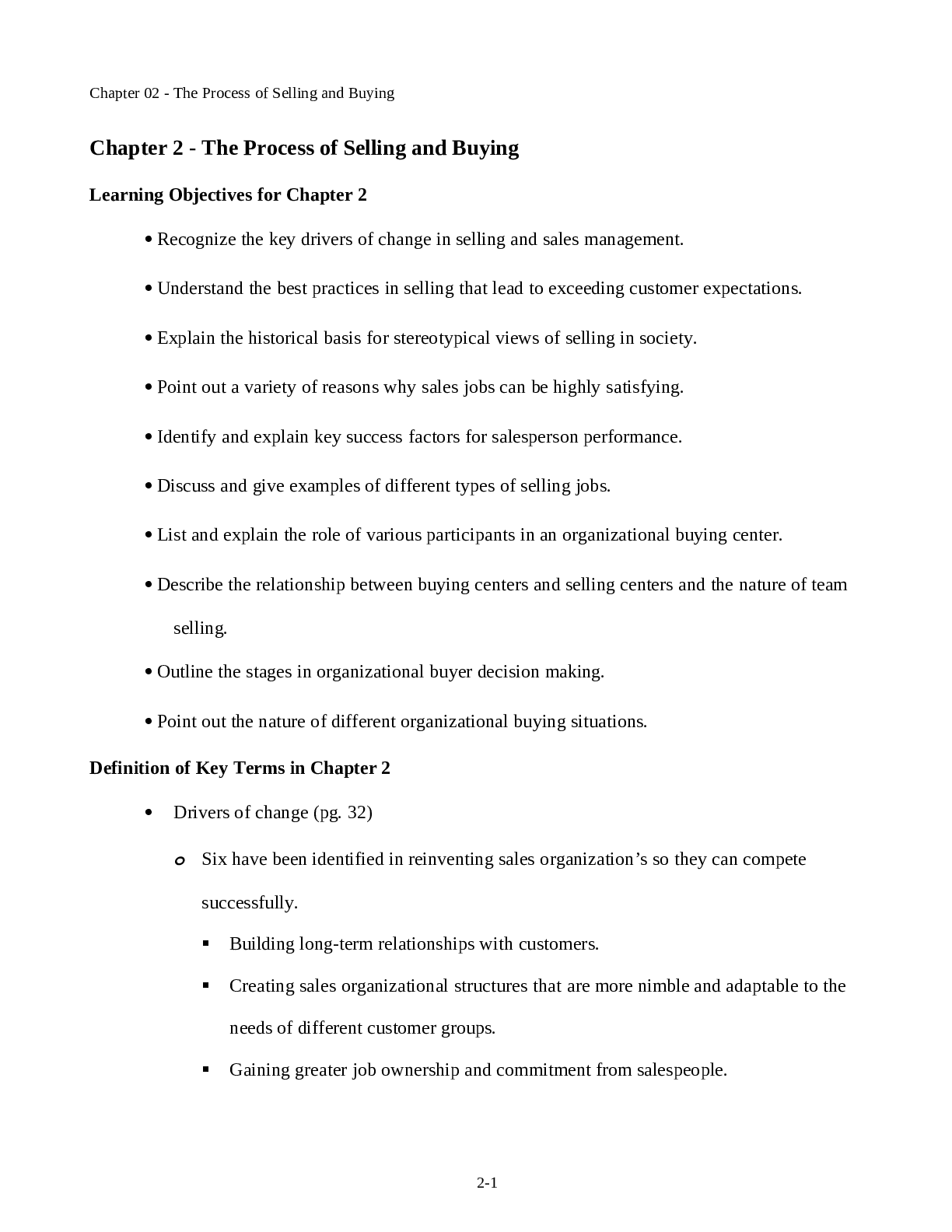
COST BEHAVIOUR ,OPERATING LEVERAGE AND PROFITABILITRY ANALYSIS
$ 13

Pearson Edexcel International GCSE In Physics (4PH1) Paper 1PR and (Science Double Award) (4SD0) Paper 1PR Mark Scheme (Results) January 2022
$ 7

AQA A Level Physics Paper 2 2019 Mark Scheme
$ 17.5

Strayer University - PHYSICS 204 > PHYS 204 : PHYS 204 Week 8 Final Exam Latest Solution Guide, A+ Work.
$ 11

>_A Level Physics B H557/01 Mark Scheme for OCT 2021 | Fundamentals of physics
$ 6.5
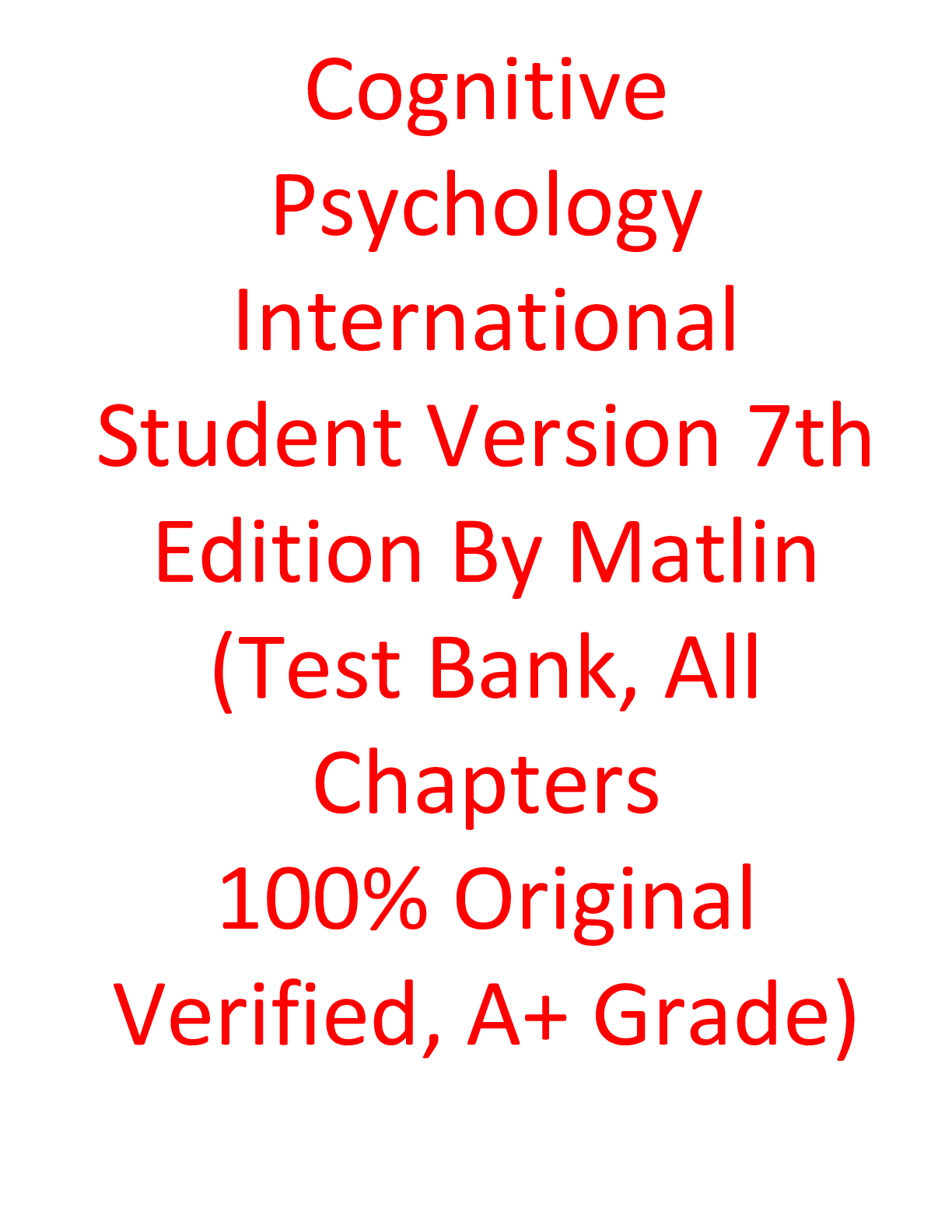
Test Bank For Cognitive Psychology International Student Version 7th Edition By Matlin
$ 22

Using AdventureWorks database and the Production schema
$ 6.5

AGNP Board Exam Question and answers - Gastroenterology Prescription
$ 20.5

MEDICAL SCIENCES REGULATIONS AND SCIENCES 2020/2021
$ 18
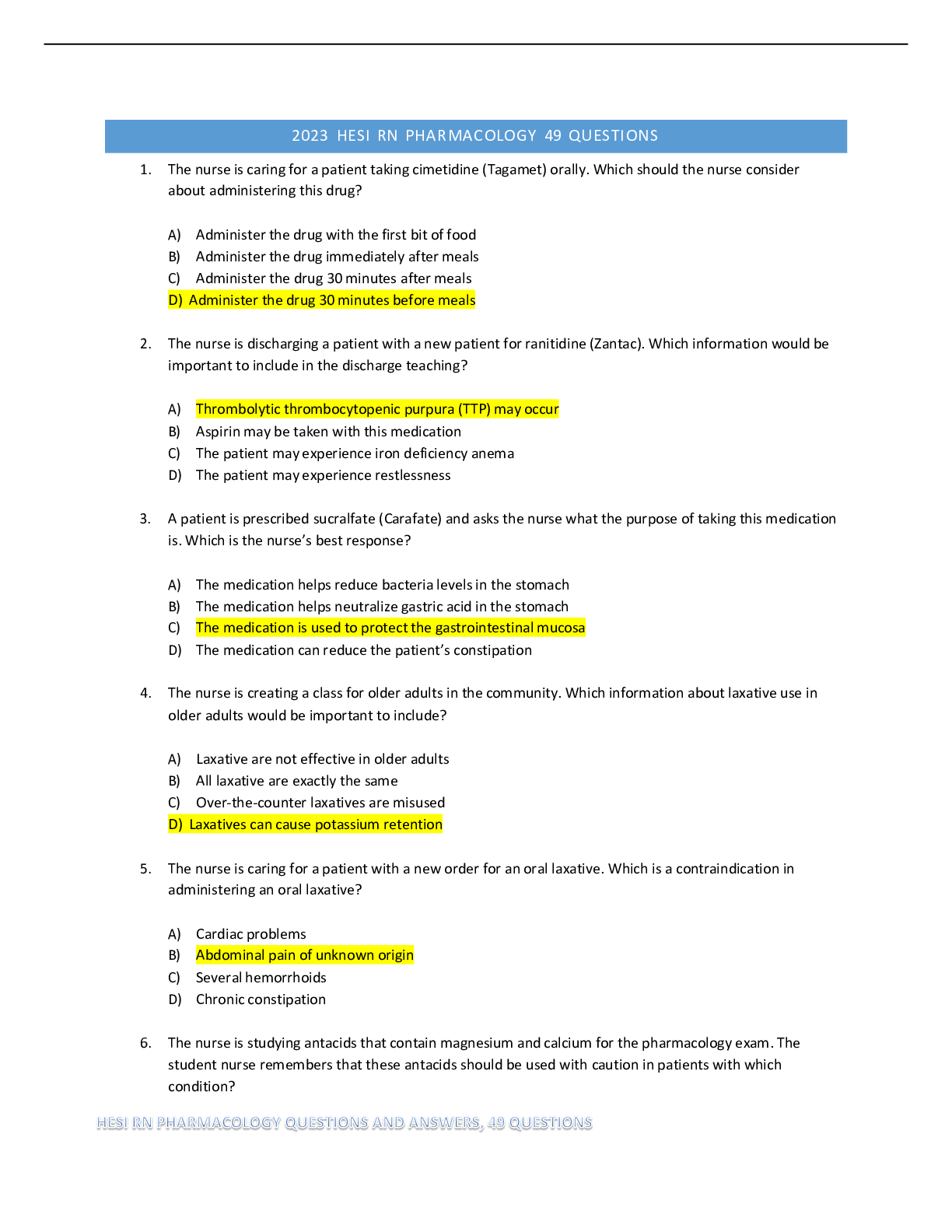
2023 HESI RN PHARMACOLOGY 49 QUESTIONS AND ANSWERS
$ 8.5
Cardiovascular NCLEX Questions / Score 100% / New 2025 Update / Nursing Test Bank & Practice Quiz
$ 14

AVID Media Composer 101 Certification Exam
$ 10.5

Business Law Notes, Revision Study Guides, Correctly Answered Questions, Test bank Questions and Answers with Explanations (latest Update), 100% Correct, Download to Score A
$ 35

ANT349. Arizona University: Discussions
$ 4

Inventory and Cost of Goods Sold. Study Notes
$ 5

Test Bank for Educational Research: Fundamental Principles and Methods 8th Edition, by James H. McMillan and Sally Schumacher
$ 5.5
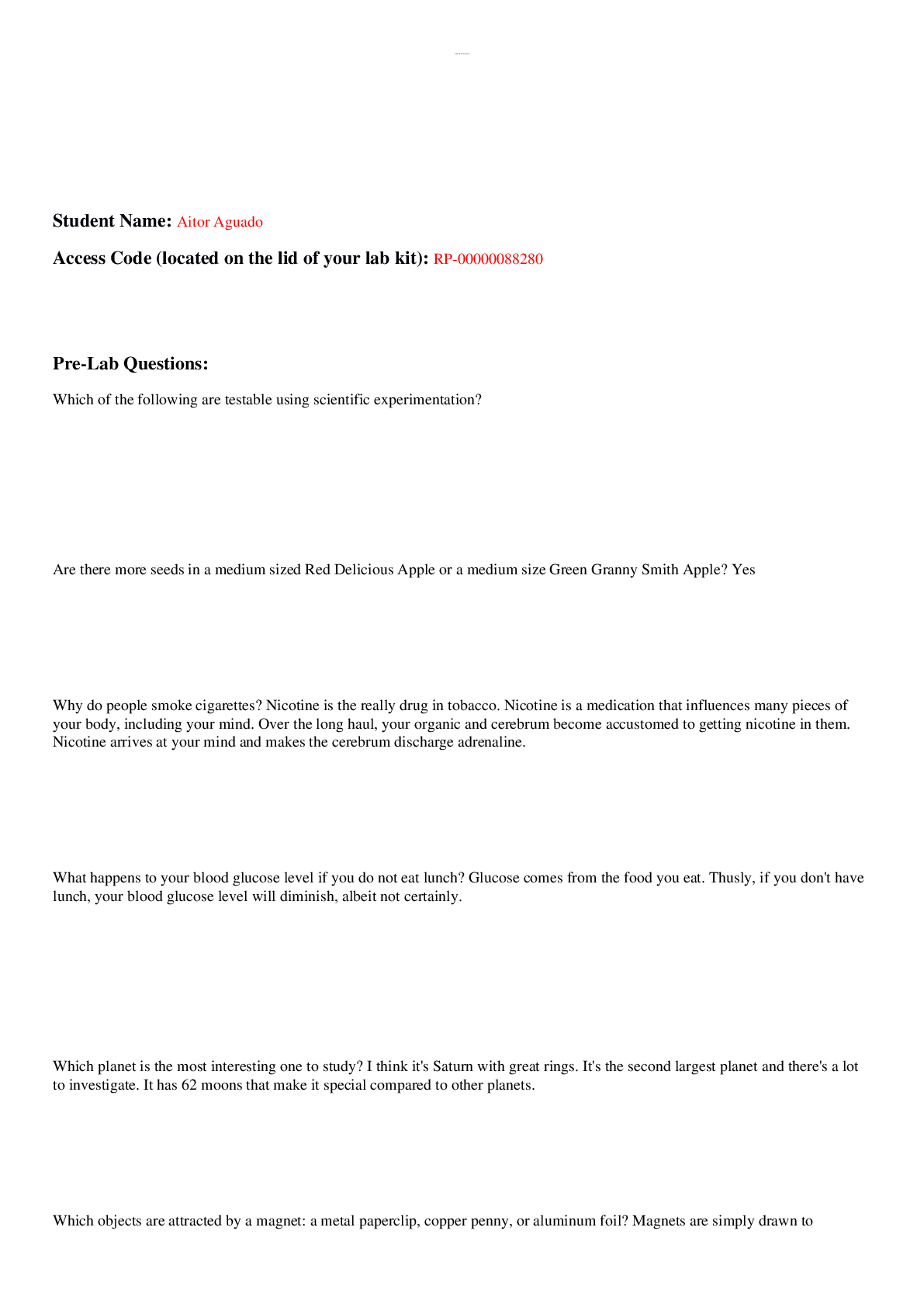
CHEM 101L Lab 2 The Scientific Method
$ 3

INTERNATIONAL AS AND A-LEVEL PHYSICS 9630 2021 ASSESSMENT RESOURCES Electricity, oscillations and waves Answers and commentaries
$ 7
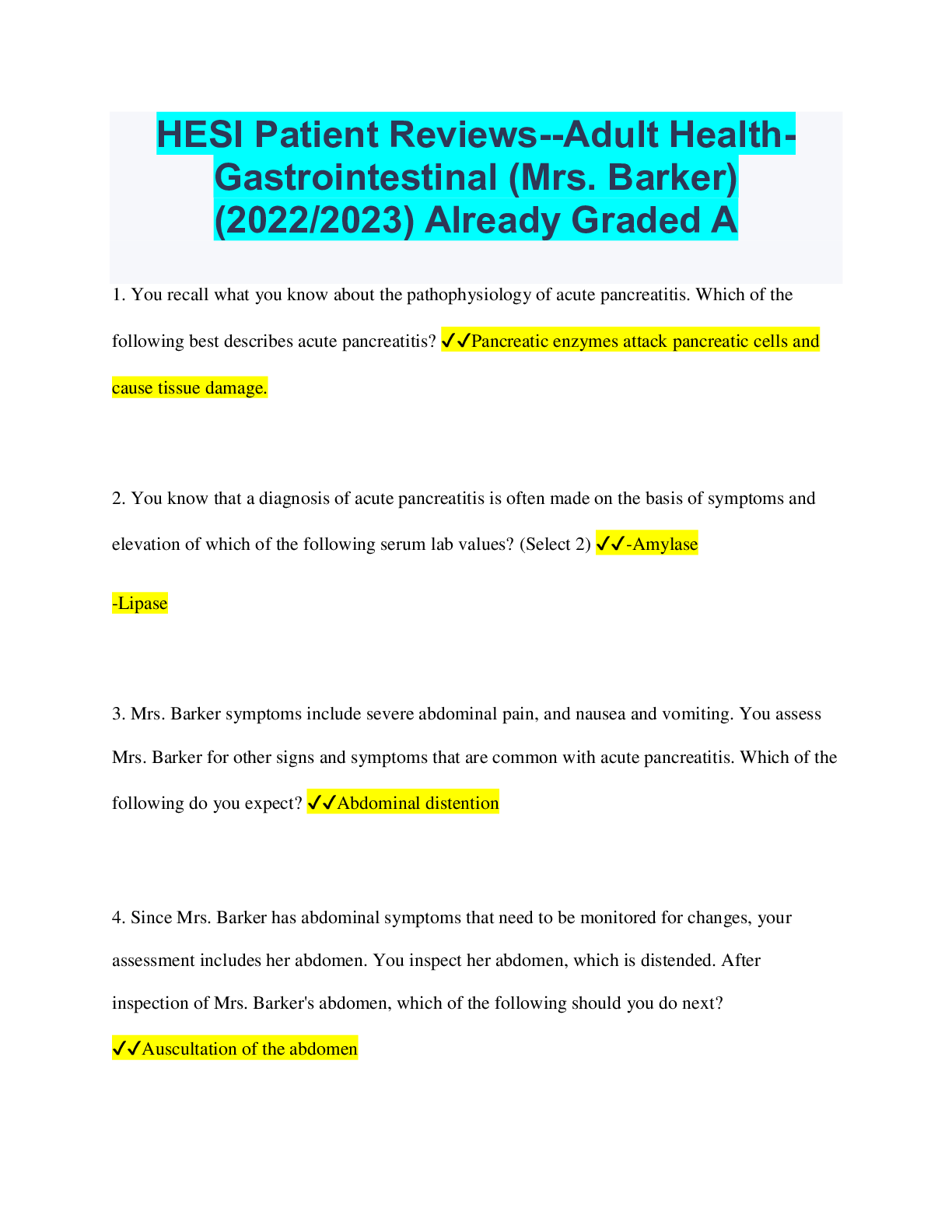
HESI Patient Reviews--Adult Health Gastrointestinal (Mrs. Barker) (2022/2023) Already Graded A
$ 8.5

University of Colorado, Denver - PHYS 2030Lab6: Experiment 6: Wave Interference
$ 11
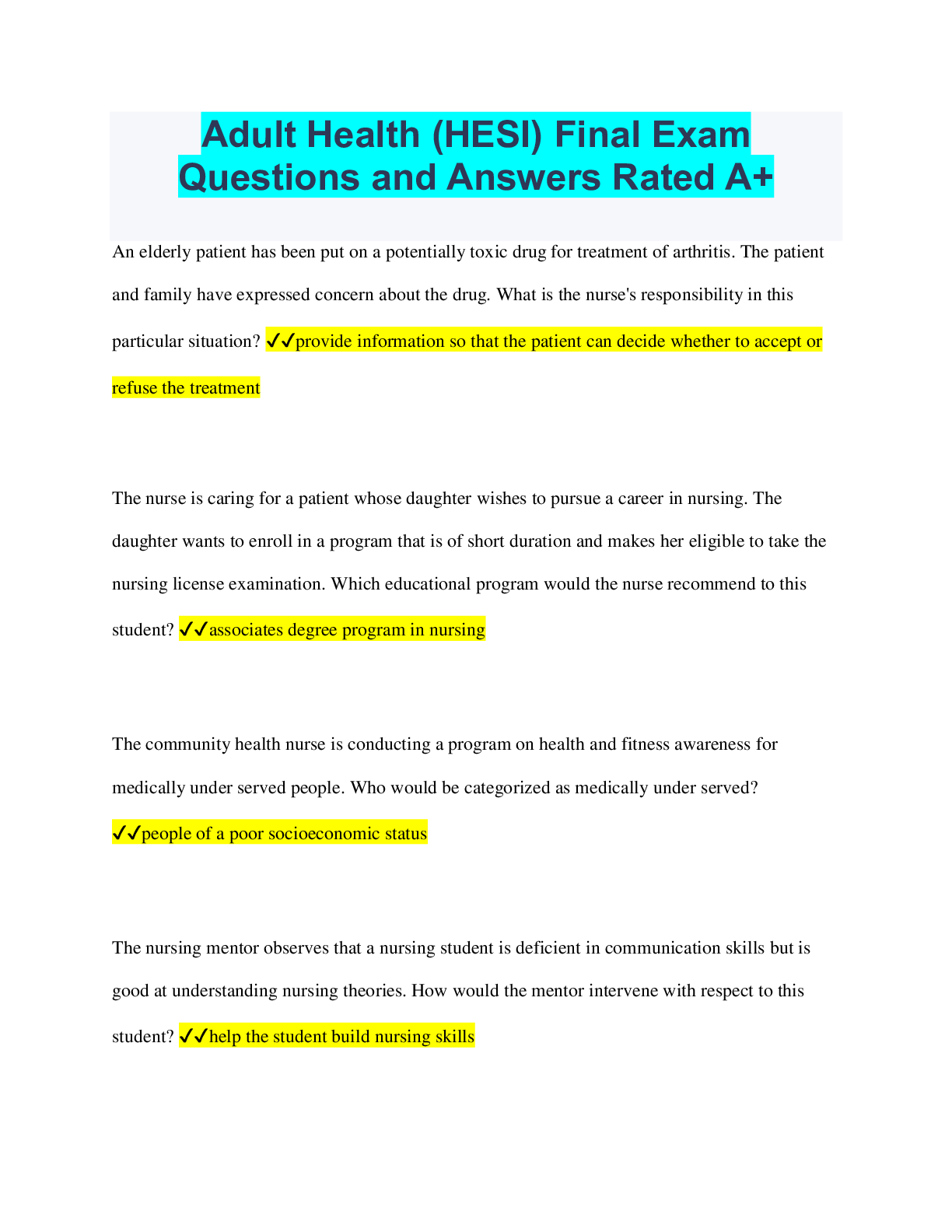
Adult Health (HESI) Final Exam Questions and Answers Rated A+
$ 10.5
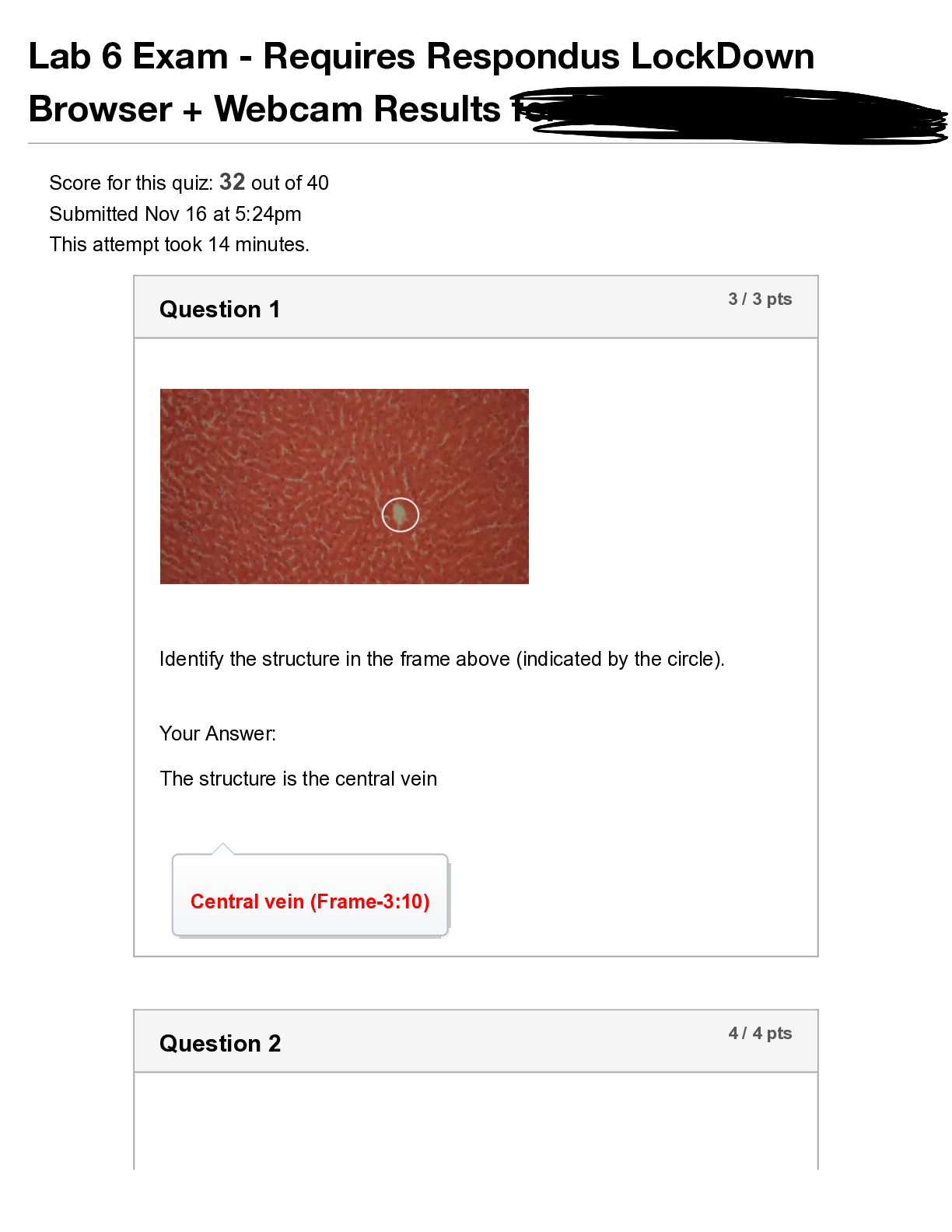
Lab_6_Exam_Essential_Human_Anatomy_and_Physiology_II_with_Lab_|portage learning 2022|All questions examinable
$ 9.5

Test Bank for Entrepreneurship 1st Canadian Edition By William Bygrave, Andrew Zacharakis, Sean Wise All Chapters
$ 20

Pearson Edexcel International Advanced Level in Physics (WPH14) Paper 01 Physics Further Mechanics, Fields and Particles MARK SCHEME / January 2022
$ 5
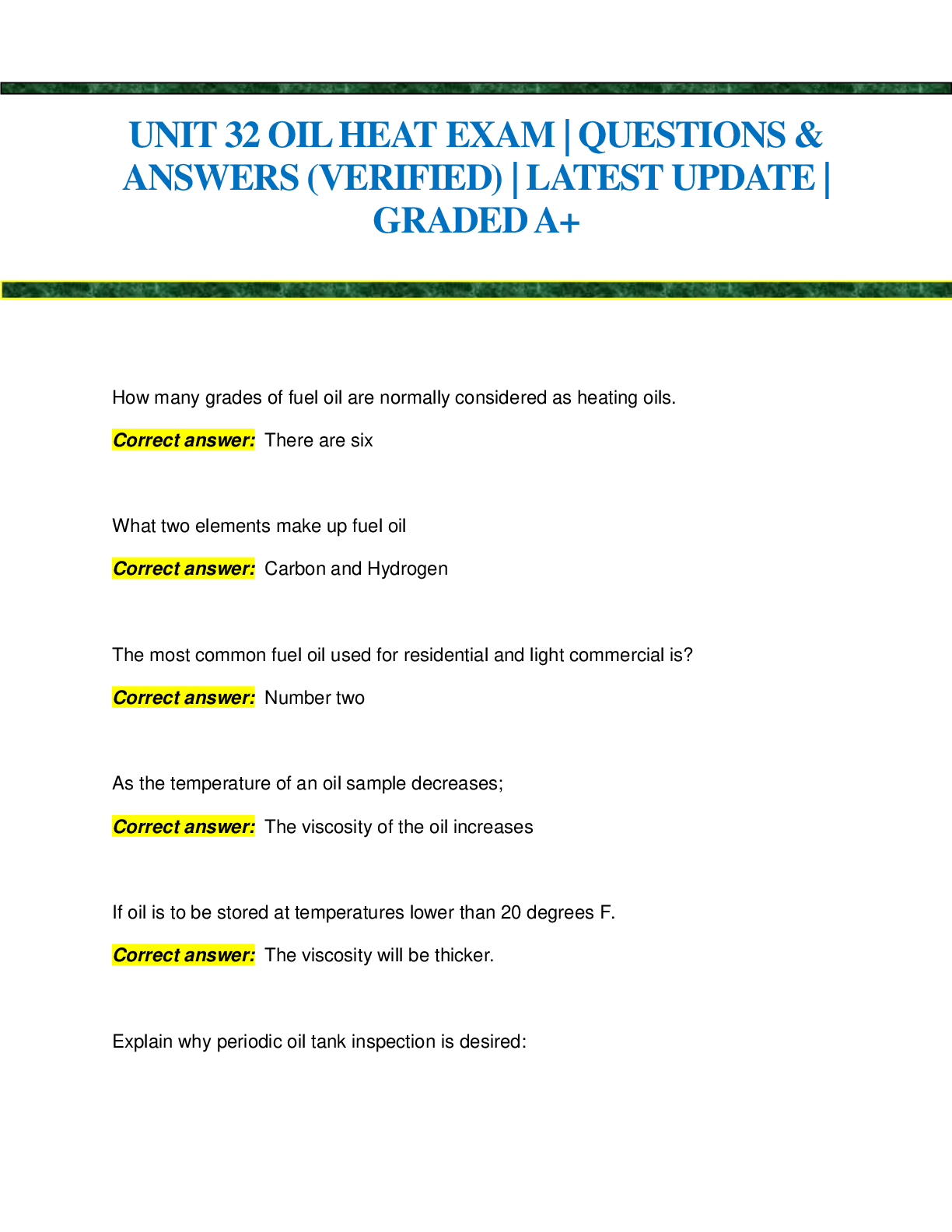
UNIT 32 OIL HEAT EXAM QUESTIONS AND ANSWERS VERIFIED LATEST UPDATE
$ 15

The Floating Man Wars
$ 2.5
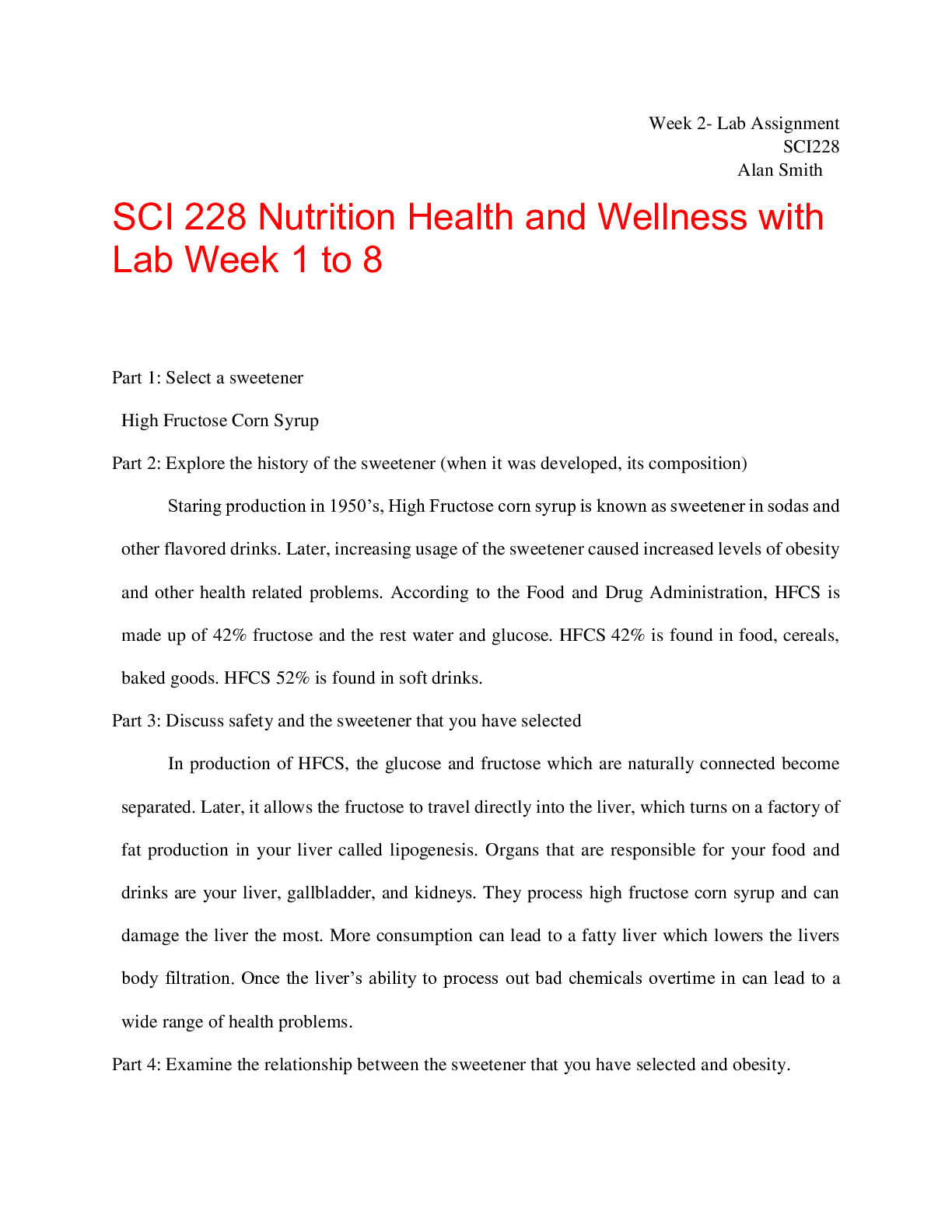
DeVry University, ChicagoDeVry University, Chicago - SCI 228SCI228 Week 2 Lab.docx
$ 40
.png)
Pearson Edexcel GCE Question Booklet + Mark Scheme (Results) November 2021 In AS Further Mathematics (8FM0) Paper 25 Further Mechanics 1
$ 10

ATI RN Comprehensive Predictor Exam Form B (all correct answers) Download to score an A
$ 12
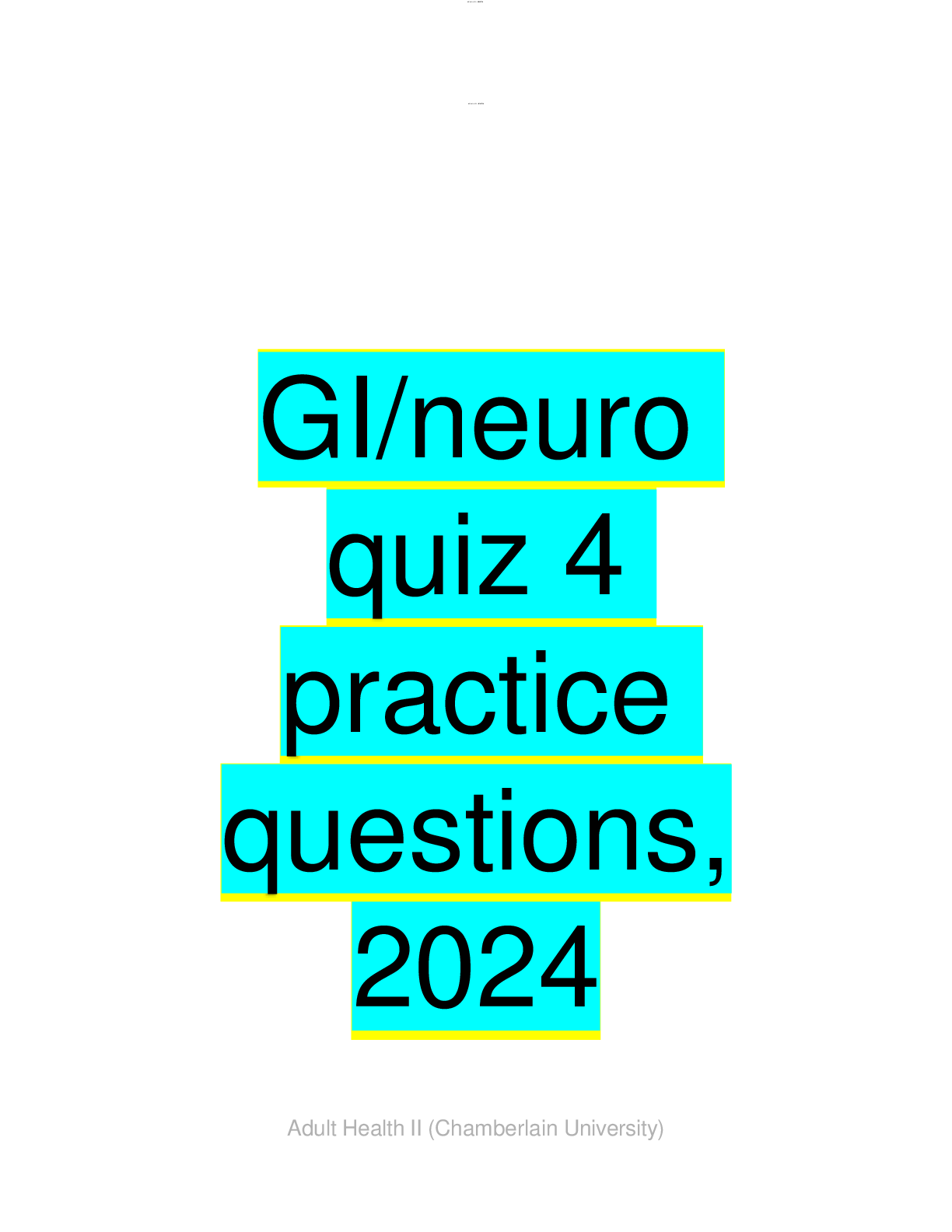
GI/neuro quiz 4 practice questions Adult Health II (Chamberlain University)
$ 10

Chapter 2—Fundamentals of Ecology. Answers Explained

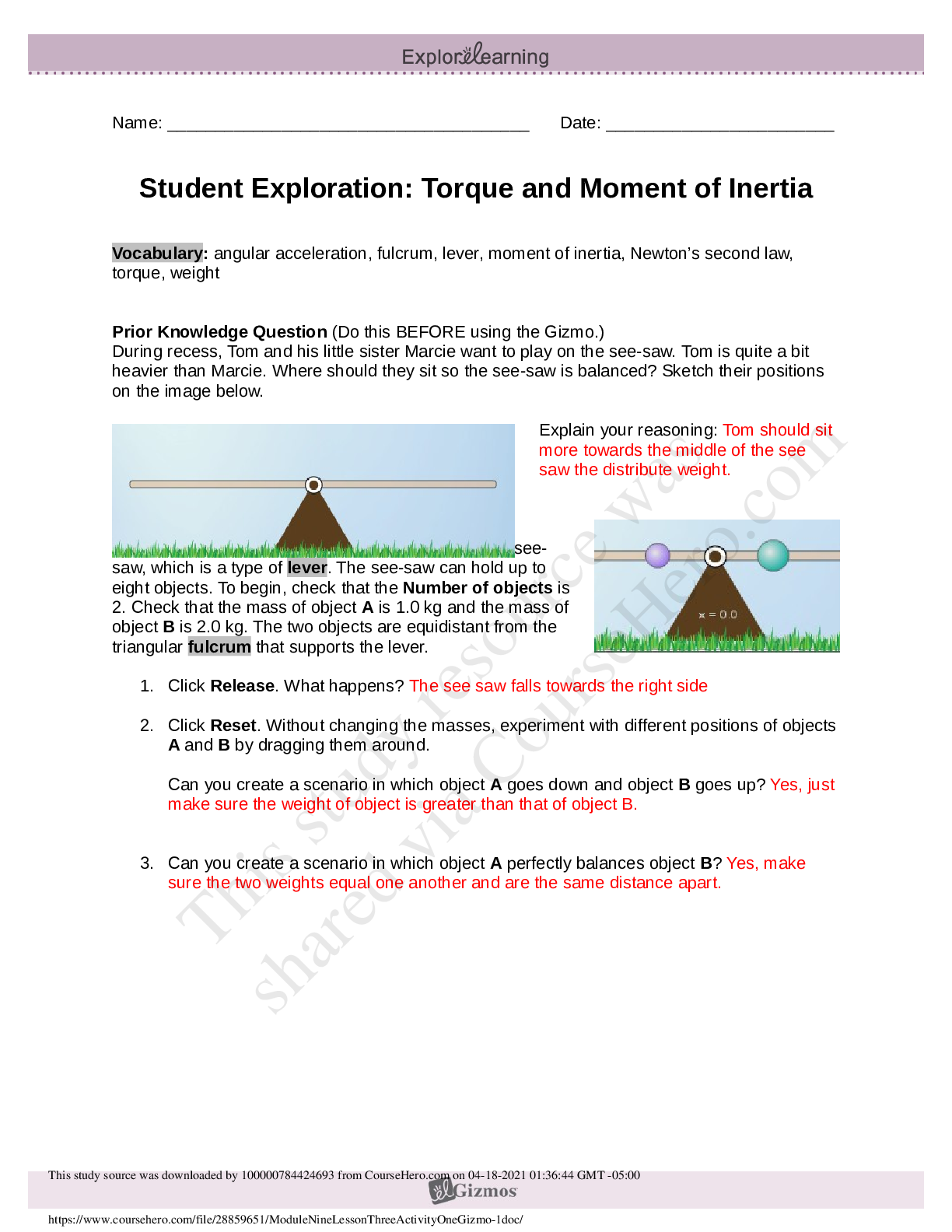


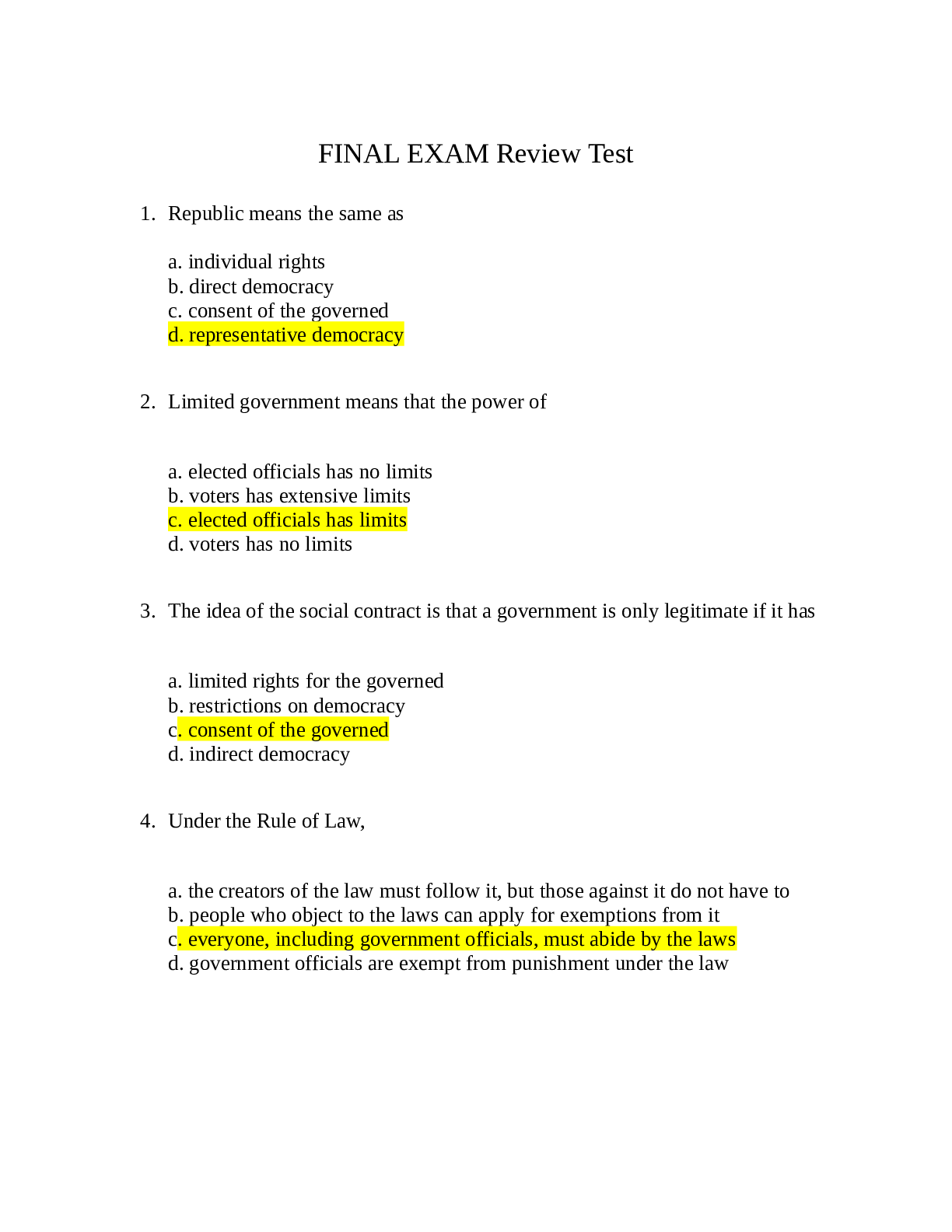

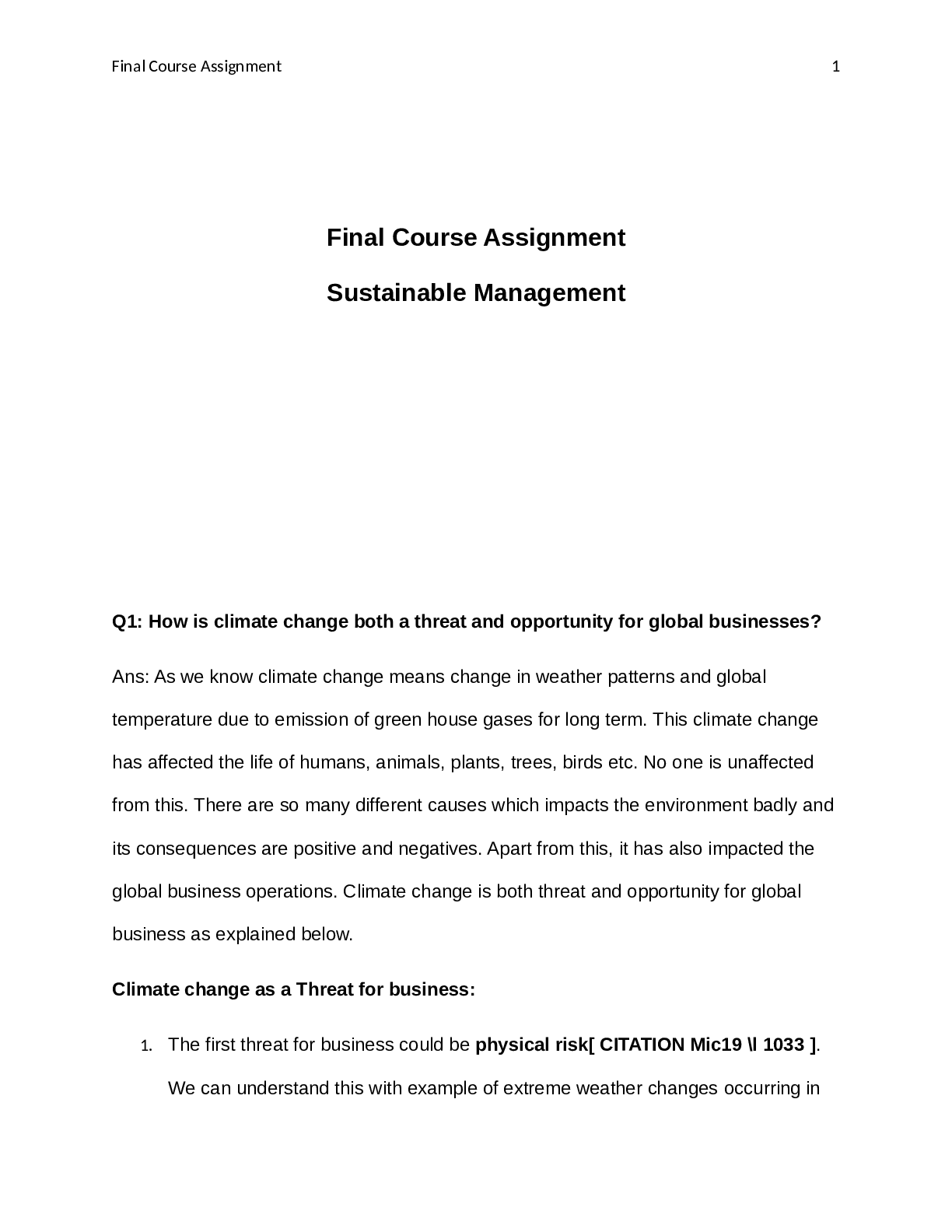
.png)


